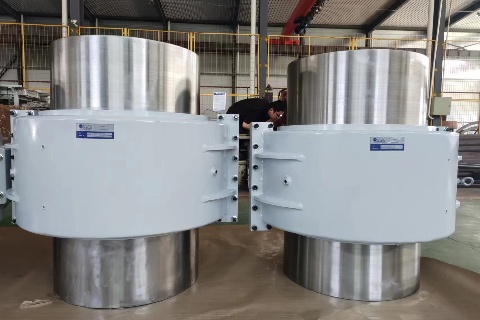
HOW TO AVOID VIBRATION WHEN USING GRID COUPLINGS
2024-10-15 15:00Serpentine spring couplings will inevitably encounter various problems during use. Among these problems, the vibration of grid coupling is the most likely one. How to solve this problem?
The advantages of grid spring couplings are small radial dimensions, large load-bearing capacity, long shaft transmission at low speed and heavy load, high-precision dynamic balance, and can be used for high-speed transmission, such as shaft transmission of gas turbines. The grid flex coupling has fewer parts, small size and light weight. The serpentine spring leaf of the grid spring resilient coupling is designed with a trapezoidal cross-section and is particularly convenient and compact to match the trapezoidal tooth groove. Therefore, the serpentine spring coupling is easier to assemble, disassemble and maintain than ordinary couplings. Since the spring leaf of the grid coupling is in point contact with the tooth arc surface, the grid coupling can obtain greater flexibility. The grid spring coupling can be installed to work normally with radial, angular and axial deviations. Therefore, in view of the use of the fan, our company proposes the following solutions to avoid the vibration of the grid flex coupling:
1. According to the on-site measurement data, the vibration of the non-driving end (impeller side) of the fan is less than the vibration of the driving end. Both fans vibrate. It is not caused by the mass imbalance of the grid spring resilient coupling of the impeller itself or the mass imbalance of the installed fan rotor.
2. The bearing and omnidirectional vibrations are mainly based on the power frequency, with obvious dual-frequency components. Whether the bearing fault frequency is obvious, it indicates that all bearings are fault-free and well installed and lubricated.
3. Whether there is an obvious blade passing frequency, the field test proves that the fan vibration has nothing to do with the baffle opening, indicating that the fan flow is normal. Through the above analysis, the causes of the fan impeller mass imbalance, fan rotor imbalance, bearing damage and poor installation lubrication, fan flow channel damage and other faults are eliminated. The vibration of the fan drive end bearing is greater than that of the non-drive end bearing. The vibration of the fan drive end bearing is similar to that of the motor drive end bearing in size and phase. The horizontal, vertical and axial vibrations of each bearing are large, and the frequency harmonic components in the spectrum are obvious. This phenomenon indicates that both fans may have misalignment problems between the fan rotor and the motor rotor. Fault confirmation and processing process Fault confirmation After research and decision, recheck the alignment of the fan rotor and the motor rotor. First, without loosening the serpentine spring coupling housing, measure the run out of the fan and motor side journals. Then, loosen the grid coupling housing and measure the alignment of the two rotors. Then, remove the serpentine spring and measure the alignment of the two rotors.

